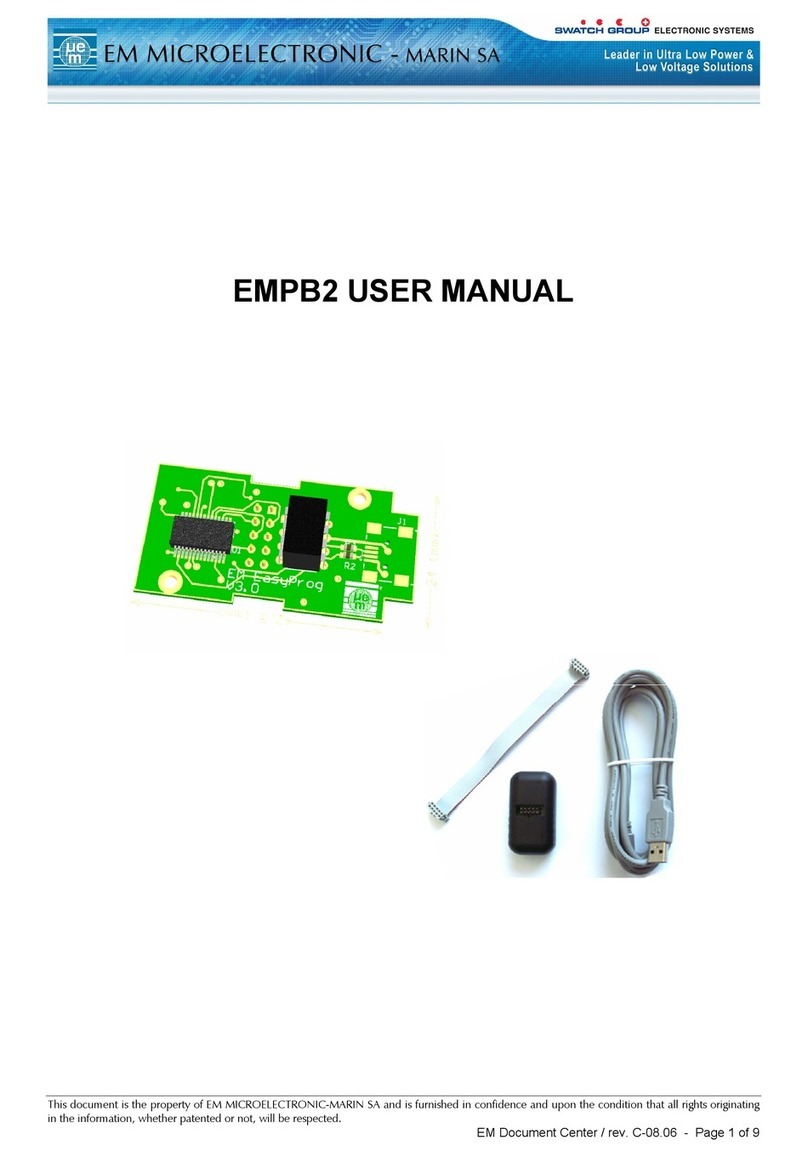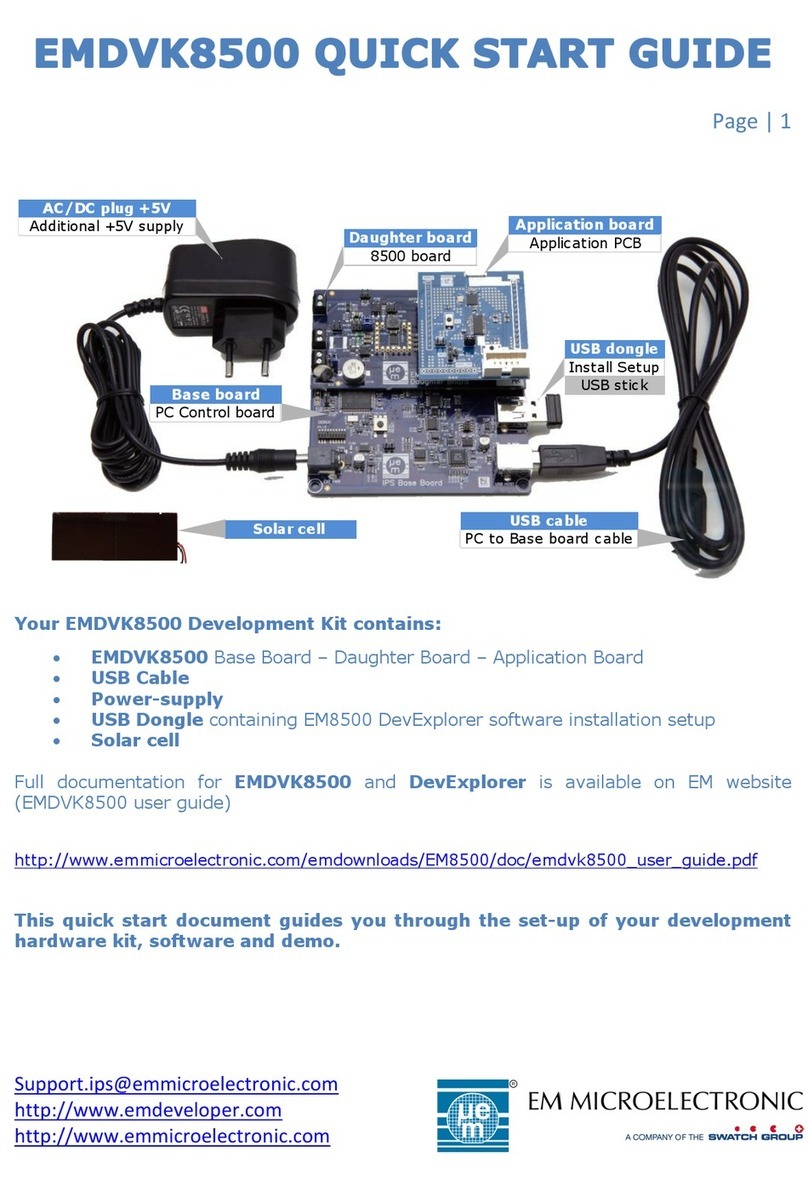
USER GUIDE ƖEM8500 SERIES
Copyright 2016, EM Microelectronic-Marin SA
EMDVK8500-MN01, Version 2.0, 5-Jul-16
www.emmicroelectronic.com
420005-A01, 3.0
EMDVK8500 DEVELOPMENT KIT USER GUIDE
TABLE OF CONTENTS
1INTRODUCTION ..............................................................................................................................................................2
2MAIN FEATURES.............................................................................................................................................................2
3CONTENT DESCRIPTION..................................................................................................................................................3
4INSTALLATION AND SOFTWARE/FIRMWARE UPDATE ....................................................................................................3
4.1 INITIAL INSTALLATION ....................................................................................................................................................3
4.2 SOFTWARE UPDATE .......................................................................................................................................................8
4.3 FIRMWARE UPDATE.......................................................................................................................................................9
5HARDWARE DESCRIPTION OVERVIEW..........................................................................................................................11
5.1 CONFIGURATION MODE ...............................................................................................................................................12
5.2 APPLICATION MODE ....................................................................................................................................................13
5.3 STAND-ALONE MODE...................................................................................................................................................14
6APPLICATION INTERFACE..............................................................................................................................................16
7APPLICATION BOARD ...................................................................................................................................................17
7.1 DESCRIPTION .............................................................................................................................................................17
7.2 SCHEMATIC................................................................................................................................................................19
7.3 BOM ........................................................................................................................................................................20
7.4 INTERNAL MEASUREMENT:A/D ACQUISITION UNIT ...........................................................................................................21
8DAUGHTER BOARD.......................................................................................................................................................22
8.1 OVERVIEW ................................................................................................................................................................22
8.2 INTERNAL MEASUREMENT:A/D ACQUISITION UNIT ...........................................................................................................24
8.3 EXTERNAL MEASUREMENT BY SHUNT RESISTORS................................................................................................................24
8.4 CONNECTIONS FOR EXTERNAL HRV MEASUREMENTS.....................................................................................................25
8.5 CONNECTIONS FOR EXTERNAL LTS MEASUREMENTS..................................................................................................26
8.6 CONNECTIONS FOR EXTERNAL STS MEASUREMENTS.......................................................................................................27
9BASE BOARD ................................................................................................................................................................28
9.1 OVERVIEW ................................................................................................................................................................28
10 EM8500 DEVELOPMENT EXPLORER USER INTERFACE...................................................................................................30
10.1 CONFIGURE MENU DESCRIPTION ....................................................................................................................................31
10.2 MEASURE WINDOW DESCRIPTION ..................................................................................................................................32
10.3 VISUALIZE WINDOW DESCRIPTION ..................................................................................................................................34
10.4 MEASURE AND VISUALIZE WINDOWS -ACQUISITION UNIT INFORMATIONS .............................................................................36
11 TABLE OF CONTENTS ....................................................................................................................................................38
11.1 LIST OF FIGURES .........................................................................................................................................................38
11.2 LIST OF TABLES...........................................................................................................................................................39
EM MICROELECTRONIC - MARIN SA




























